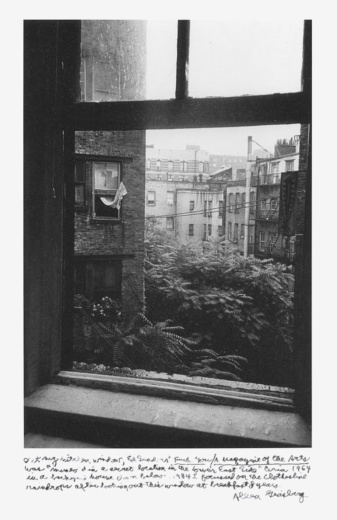by Steve Clay
In 1996, Rodney Phillips and I began curating the exhibition, “A Secret Location on the Lower East Side,” which took place at the New York Public Library from January 24 – July 25, 1998, followed by a book of the same title published by NYPL and Granary Books. We had the fond hope to someday significantly broaden our view beyond the New York City / San Francisco / New American Poetry vortex — to focus on developments further afield, from Cleveland to Kathmandu. For fifteen years, I’ve envisioned a second volume of the Secret Location book, though always accompanied by the nagging sense that a printed book would never be able to contain it all. With considerable resistance on my part, the notion of a website became the inevitable solution.
When the book was first published, Larry Fagin said, “You should have called it from A Secret Location.” Although too late to change, I immediately knew he was right. Thus, the title of the website. The primary purpose of the site is to resurrect and expand the contents of the book, to be a storehouse of information about poetry, little magazines, small presses, and transient documents from the mimeo era and beyond. The site includes most of the contents of the book (corrected and slightly revised) while providing a location for an ever-expanding index of additional material. At the outset, some magazines and presses will be listed with the barest of facts: editor(s), dates and location(s) of operation, and, in the case of magazines, what comprises a complete run. As time allows, the descriptions will be expanded with commentaries and enhanced with photographs and other documents. Furthermore, curated sections will be developed to include local phenomena and international tendencies from Kansas, Iowa City, Placitas, Bolinas, Cleveland, Detroit, Chicago, Providence, Washington, D.C. / Baltimore, Vancouver, Toronto, Great Britain, Europe and beyond, while bringing in such developments as concrete, visual, and sound poetry. The site will always be preliminary, never complete and never entirely accurate, yet it will be a repository of information that allows for continuous revision, correction and expansion. As David Meltzer so wisely pointed out after compiling his “SF Poetry Chronology”*:
“I could see a dedicated bibliographer coming out of his cave after a decade’s work with a book as fat as a phonebook — and still not having gotten it all down. The life of poetry is that way. It moves fast and quick and usually it moves on.”
*The San Francisco Poets (New York: Ballantine, 1971).


